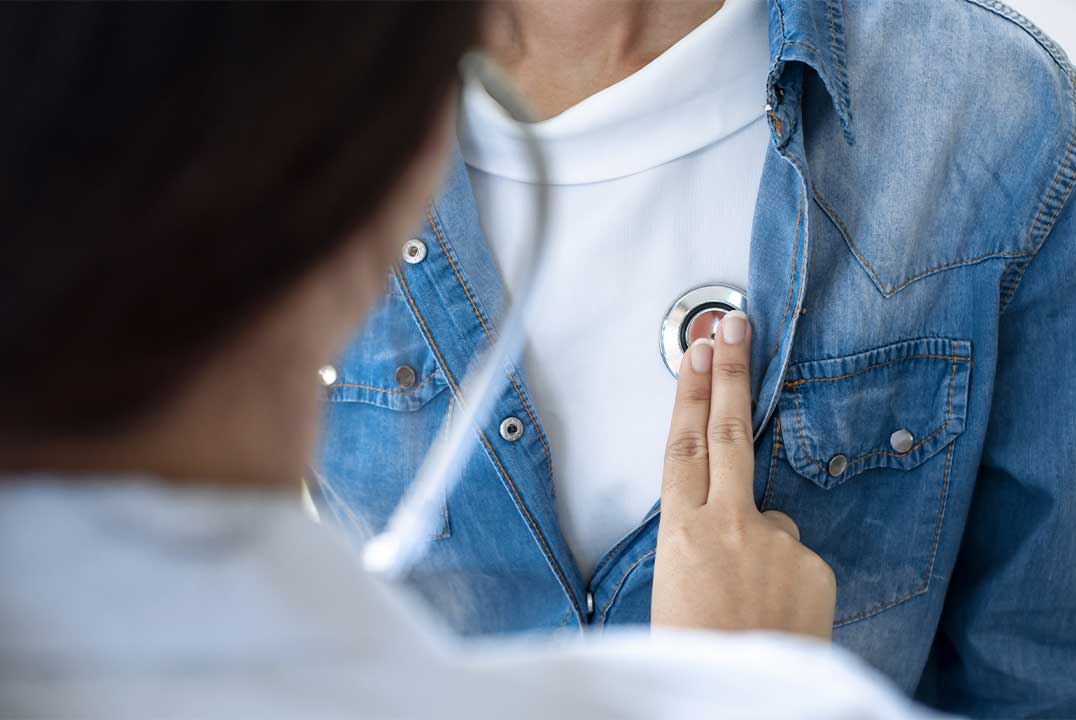A stroke is a sudden and serious injury to the brain. They can seemingly happen suddenly and with no warning, even to otherwise healthy individuals. Educating yourself on the signs of a stroke is an important way to keep yourself and those around you- safe.
Prompt medical attention is critical to successful stroke recovery. Keep reading to learn more about stroke signs and how you can help.

What is a stroke?
A stroke is an injury to the brain that interrupts the brain's blood supply. Blood carries oxygen to all the cells in your body, including your brain which has a constant and high demand for oxygen. If brain cells go more than a few minutes without oxygen, they will die and that can cause permanent damage.
A stroke can cause serious damage to the brain or even death. Quick medical treatment is critical to improve the chance of survival and decrease the amount of brain damage. The best scenario is for treatment to happen within the first few hours of symptoms.
If your or someone you know is demonstrating stroke symptoms, do not drive to the hospital yourself. Call 9-1-1.
Emergency medical technicians can increase the chance of survival by giving treatments on the way to the hospital.
Typical stroke symptoms
Symptoms of stroke can occur suddenly and differ depending on the part of the brain that is affected. Multiple symptoms can happen together when the blocked or bleeding blood vessels supply a large area of the brain that includes multiple functions. With a stroke, anything your brain does may be affected.
There are some signs of a stroke that are more common than others. The American Stroke Association teaches the acronym F.A.S.T to understand and recognize the most common signs and symptoms of stroke.
F.A.S.T means:
- Face drooping: Drooping of the face on one side, with or without numbness. Ask the person to smile, it should not be uneven.
- Arm weakness: Arm weakness with or without numbness. Can the person lift both arms? One arm may drift downward.
- Speech difficulty: When the person speaks, is it hard to understand? Ask the person to repeat a simple sentence. Listen for any abnormalities.
- Time to call for emergency medical services: Call right away if someone shows these signs or symptoms, even if they go away. It is very important to note the time symptoms appeared and when you called for medical help.
Learn more about strokes and warning signs »
Your risk factors for stroke
There are some risk factors that are out of your control such as age and genetics. Simply put, the risk of stroke increases as you age. Though it's worth noting that men are more likely to have a stroke at a younger age while women tend to have strokes later in life and die from them.
If you have family members who have had a stroke of history of cardiovascular disease, your risk of stroke is increased. Other genetic factors related to blood clotting or high blood pressure also affect your risk of stroke.
There are other risk factors that increase your likelihood of stroke, however these can be controlled. It is important to establish regular visits with your primary care physician to monitor these potential risk factors:
- High blood pressure: High blood pressure is the leading cause of stroke and the most controllable risk factor for stroke.
- Smoking: Studies have shown cigarette smoking to be an important risk factor for stroke. The use of oral contraceptives combined with cigarette smoking greatly increases stroke risk.
- Carotid or other artery disease: Arterial disease generally leads to the narrowing or blockage of blood vessels which raises the risk of stroke.
- Atrial fibrillation: This heart rhythm disorder raises the risk for stroke. The heart's upper chambers quiver instead of beating effectively, which can let the blood pool and clot. If a clot breaks off, enters the bloodstream and lodges in an artery leading to the brain, a stroke results.
- Other heart diseases: People with coronary heart disease or heart failure have a higher risk of stroke than those with hearts that work normally. Dilated cardiomyopathy (an enlarged heart), heart valve disease, and some types of congenital heart defects also raise the risk of stroke.
- High blood cholesterol: People with high blood cholesterol have an increased risk for stroke. Also, it appears that low HDL ("good") cholesterol is a risk factor for stroke in men, but more data is needed to verify its affect on women.
- Physical inactivity and obesity: Being inactive, obese, or both can increase your risk of high blood pressure. high blood cholesterol, diabetes, heart disease, and stroke.
You and your primary care physician
If you have some of the stroke risk factors mentioned above, it is important that you establish a relationship with your primary care doctor that includes regular check-ups and monitoring tests. Your doctor can help you develop a plan to reduce your risk of stroke.
Call (574) 722-4921 to schedule an appointment.




